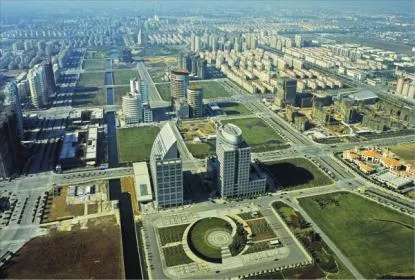
Take a look at the remarkable progress of China's Suzhou Industrial Park (SIP). China's Ministry of Commerce ranks SIP as the most competitive industrial park in the country. I think it's the most competitive in the world. I predict you will agree once you read its astounding accomplishments.
A recent BusinessWire report says centralized planning is a primary advantage for SIP compared to the U.S. and Europe. So my question is -- what will it take for other, less centralized countries to step up to this challenge and build their SIP-style industrial parks? Or is it already foregone that China will lead the world? -- Jesse Berst
The Chinese city of Suzhou is located in the Yangtze River Delta near Shanghai, the world's busiest port. It has attracted worldwide attention for the success of is Suzhou Industrial Park (SIP), a cooperative project between China and Singapore. Consider these astonishing statistics:
- 288 square kilometers (111 square miles)
- 4,600 multinational enterprises
- 3,000 startups
- 250 R&D centers
- 200 venture capital firms with more than $5.5 billion in funds
- An average growth rate of 30% over 18 years
- Attracted $22 billion in foreign investment and $43 billion in Chinese investment
- Had a gross domestic product all on its own of $25 billion in 2011
SIP houses a population of around 700,000 (including 20,000 foreigners). It boasts lakes, landscaped office buildings, shopping malls, entertainment centers, well-organized traffic and even a Ferris wheel.
Nor is SIP resting on its laurels. It is now moving strongly to become a world-leading smart city. It has already pulled together the data from more than 100 data centers operated by 20 government entities. Now it is building a map of the city that contains 660 layers of information -- from power lines to green areas to population demographics. Once completed, the GIS system and the data behind it will be made available to third-party developers.
The benefits of master planning
One of SIP's planners believes SIP is in a better position to implement the smart city dream than many other cities. "Other cities may also have multiple companies providing systems and services, creating a silo effect when it comes to data," Tao Hong, chief architect of GIS says. "In SIP, GIS is the sole geoinformation provider. We have a seamless integration of data."
SIP is in a better position than other cities thanks to its master plan, says Tao. The master plan means that SIP doesn't have to deal with legacy issues and can essentially start "from a clean slate."
Smart city projects already underway
SIP's data fusion project has already yielded results. A pilot project consisting of four arterials and 70 intersections improves peak-time traffic by adjusting the timing of traffic lights. The results: A 15-20% reduction in travel times.
Other projects:
- Real-time bus tracking at bus stops with predicted arrival times
- 400 free bike-sharing stations with 10,000 bikes for citizens with a special SIM card. A computer system tracks the bikes to replenish stations that are running low
- Coming soon: Centralized medical, dental, tax and educational records stored in the cloud for anytime, anywhere access
###
Jesse Berst is the founding Chairman of the Smart Cities Council. Click to subscribe to SmartCitiesNow, the weekly newsletter highlighting smart city trends, technologies and techniques.



